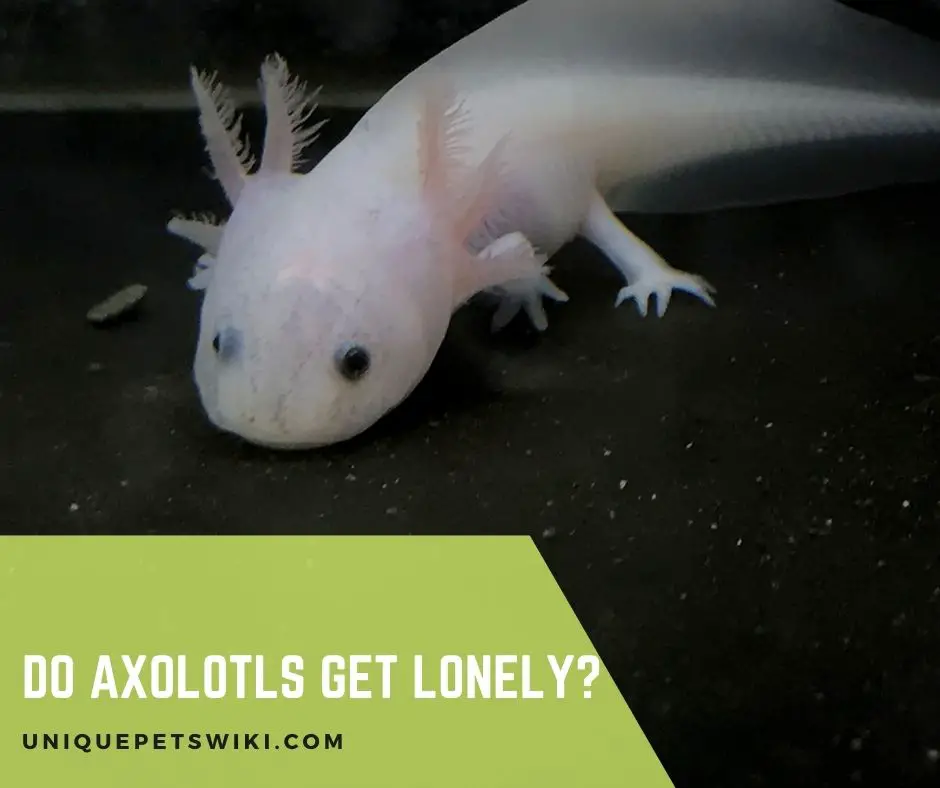Keeping axolotls is very satisfying and great fun. Just peeping through the glass walls to see this hybrid of amphibians and fish is rewarding, but do axolotls get lonely?
If you are planning to keep axolotls, also referred to as walking Mexican fish, you should know the conditions that come with it.
Axolotls are generally solitary animals that only come together to mate and raise young ones. You should respect that, though you can provide tankmates to make the habitat look natural.
Read on to find answers to every question you have about the lifestyle of axolotls, including suggested tank mates.
Contents
Do Axolotls Get Lonely?
No. Axolotls never get lonely because living alone is their nature. They are solitary salamanders that prefer to stay alone in the wild.
Axolotl would rather be alone than having a companion. One can be happy in the tank without other axolotls or fish.
However, there are times when they come together. And that is when they have to make and breed. Also, some may prefer the company of others, but that is a rare occurrence.
Why Axolotl Doesn’t Need a Companion?
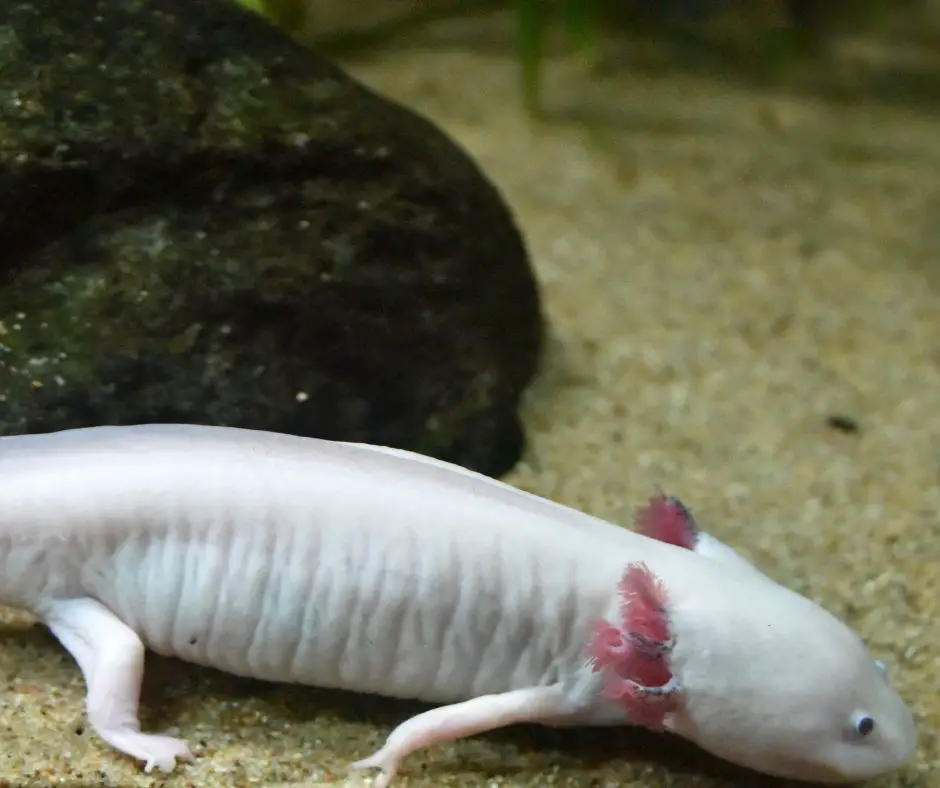
Axolotls are solitary animals in nature. They mostly stay alone and don’t need a companion to be happy. They don’t need other axolotls or fish in their tank to be happy or content with their lives.
Axolotls spend most of their time alone without one of their kind, except when they want to mate and raise their young ones.
The population of axolotls worldwide is not as high as other pets. They are endangered species and find it hard to have a companion.
Even if they were to be social animals, finding a partner would still be challenging.
Also, the habitat requirement for axolotls differs from those of fish and other amphibians.
They most thrive in cooler temperatures of around 60-65 degrees Fahrenheit, while fish need much warmer waters.
Keeping axolotls with fish can lead to competition for space and food. First, axolotls feed on small fish.
As the fishes grow in the tank, they may prey on the axolotls. Many pet lovers find it challenging to balance the fish and axolotls populations.
But what if you introduce a different marine life into the tank? Well, that is an option, but not a good one.
Fish and other marine animals can host parasites and viruses that infect axolotls. You don’t want to deal with deaths, do you? It is better to keep axolotls in solitary!
Should Axolotls Be Kept in Pairs?
Yes. You can keep axolotls in pairs, but with considerations. You should examine their age, size, gender, and space in the tank.
These factors are likely to affect their lives and determine whether they survive or succumb. If you can’t take your time to consider them, it is better to keep your axolotls on their own.
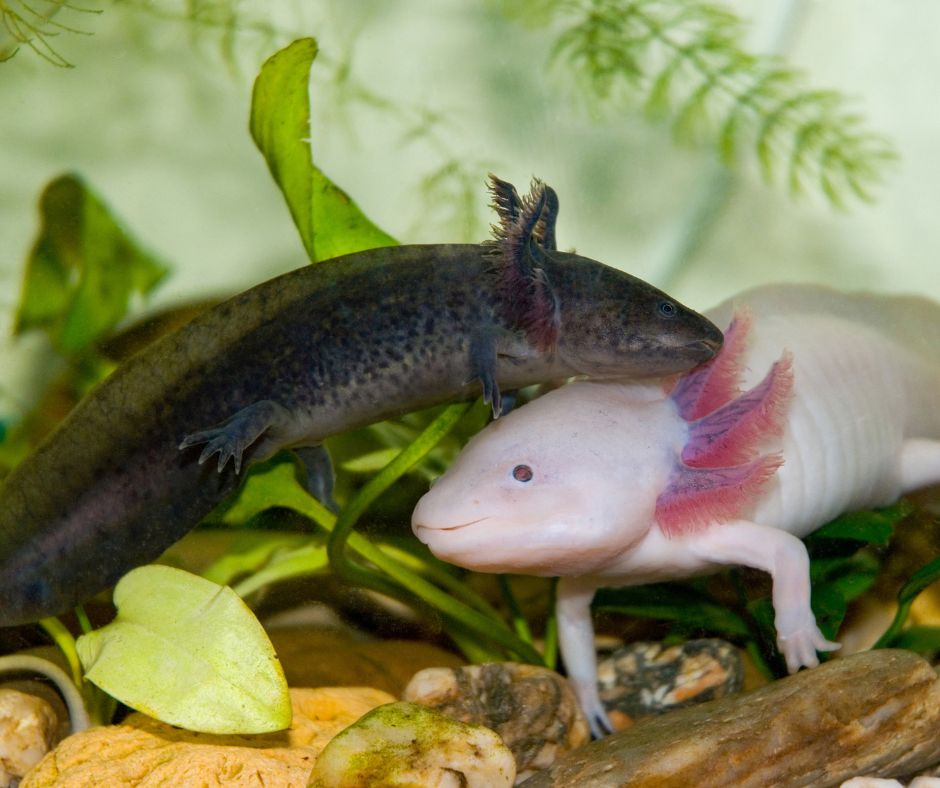
Age and Size
Axolotls and cannibalism are almost synonymous. They are likely to prey on each other, especially if there is an age difference.
Their cannibalism is evident from a young age and remains their nature into adulthood.
Age or size difference can also lead to aggression. Axolotls are territorial and don’t like a competitor.
If you consider keeping a pair of axolotls in the same tank, they should be of the same age and size, preferably 5 inches and above in length.
Also, there will be a high risk of cannibalism if there is a significant size difference. Axolotls eat anything that fits their mouth. So, smaller ones can be swallowed whole by bigger axolotls.
However, bringing together two adult axolotls that have survived in solitary is not advisable. It will take these pets some time to get along, which is not guaranteed.
Also read: Axolotls Eating Each Other: Causes and Solutions
Gender
Gender is a critical factor to consider when bringing axolotls together. Housing a male and female in the same tank may shorten the lifespan of the female.
Males are generally aggressive and always bother the females to mate. This may lead to a successful union or not.
But if you still want to keep them together, we advise you to consider the same gender and provide ample space.
A 20-gallon and above the tank is ideal, and there is no other way to go about that. It is an absolute necessity to keep axolotls in pairs!
So, what are the conditions for keeping axolotls in pairs? They should be of the same age, size, and ample space in the tank.
Keeping the same gender is preferred, but you can also try with opposite sexes. However, these conditions do not guarantee that these naturally solitary animals will get along.
Also read: How To Tell An Axolotl’s Gender
What Fish Can Be Kept with Axolotl
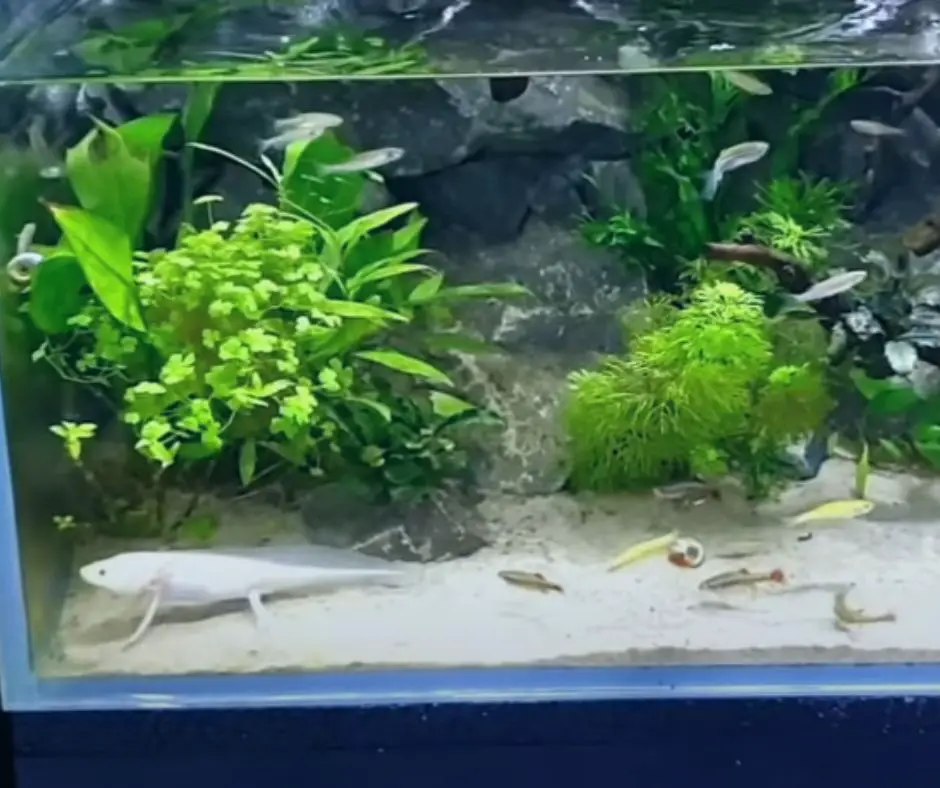
Axolotls can do well in the same tank with some fish species. However, you have to consider some conditions.
Your axolotls can feed on fish and vice-versa. That means you should check the size and number of fish you add to the tank.
Other conditions to consider include the following:
Keep the number to less than 10 to avoid crowding the tank – choose fishes about 2 inches or less in length.
- They should not be the same size or larger than your axolotls
- Deploy an excellent filter and change the tank water frequently
- Regularly replenish the tank with small fish or fishes reproduce fast to keep a healthy population
- The fish should be nutritious if you intend them to be the food for your axolotls
- Choose disease and pest-free fish
- The fish should be well adapted to cold freshwater.
If you don’t intend to use the fish as food for your axolotls, they should be quick and much larger in size so that axolotls don’t think of them as food.
But they should not be too big to think of axolotls as their food.
Fortunately, many fish species meet the above descriptions. But you should monitor the behavior of your pest and intervene if necessary.
If axolotls show damage on the gills, fishes may be attacking them. You can tame that behavior by feeding your fish or getting a different tankmate.
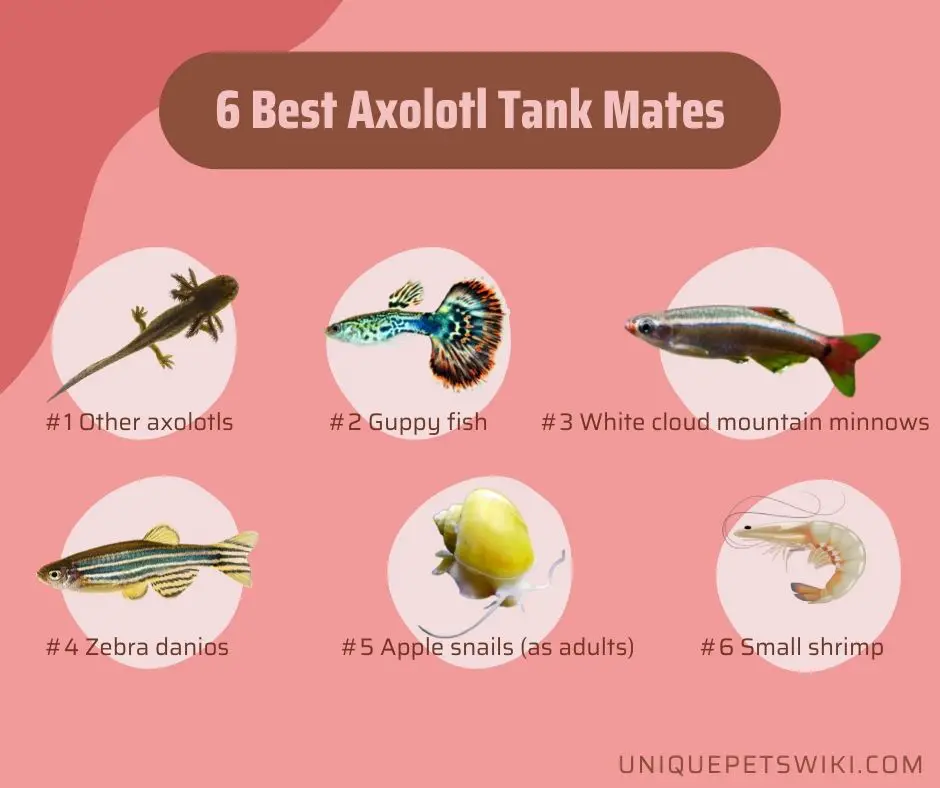
Consider the following fish species as possible tankmates for your axolotls:
- Golden skiffia
- Orange-finned danio
- Guppies
- Mosquito fish
- White cloud mountain minnow
- Zebra danio
Also read: 6 Best Axolotl Tank Mates
Inkbird ITC-306A WiFi Temperature Controller
- 🐠🐠 [Dual Protection] The aquarium temperature controller is equipped with 2 relays to ensure that the power can be turned off under any circumstances, this will protect your fish from being hurt by overheated water. (US Socket Only)
- 🐠🐠[Two Probes] Your fish might be in danger as it is hard to know the probe is broken immediately if the temperature controller has only 1 probe. The dual probe aquarium temperature controller will alarm if the temperature difference between 2 probes is bigger than 3℃/5℉, and the INKBIRD app will push a notification at the same time.
- 🐠🐠 [Continuous Heating Alarm] The heating time can be set according to your needs from 1 hour to 72 hours, the controller will alarm if water can not be heated to the setting temperature within the specified time. The temperature setting range is 20.0℃~35.0℃/68.0℉~95.0℉ and the detectable temperature range is -40℃~100℃/-40℉~212℉.
- 🐠🐠[Plug and Play] The 1100w high-power aquarium temperature controller is compatible with most kinds of heaters, you don’t need to assemble the product yourself, just plug and play.
- 🐠🐠[APP Notification] Pair the aquarium temperature controller with your phone via 2.4GHz Wi-Fi, the device will alarm if there are exceptions. And all exceptions will be updated to the INKBIRD APP, the INKBIRD app will push notifications to remind you.
Last update on 2022-12-29 / Affiliate links / Images from Amazon Product Advertising API
Some Thoughts
When axolotls are next to each other, they often don’t attack one another, but that does not mean they get along.
Generally, axolotls do not live as groups in the wild. So, you should respect that. If you really want a pair, you can consult friends and groups with experience keeping axolotls.
Socialize and try putting them together. But always check out for signs of aggression or discomfort.
Thank you for reading this article at Petsive. We have more related content for you that you can explore. Also, we invite you to share it with your friends and other pet enthusiasts.
Also read: Can Axolotls Live Together?
